South African
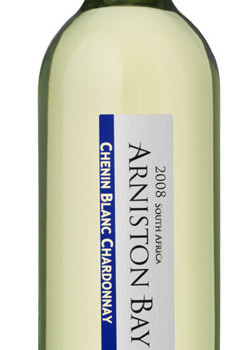
There has been a sharp increase in the quality of South African wines but the price does not always reflect this improvement meaning great value is to be found.
16 March 2010
Fifteen years ago, South Africa’s wine industry was still emerging from the sanctions period. Finance and wine training were increasingly available but the industry had lots of marketing lessons to learn, while viticulturalists had problems with badly sited vines, poor grape clones and viral vine diseases.
Great progress has been made on all fronts, yet this has not gone to South Africa’s head. Better made wines haven’t always led to an ambitious jump in prices and its expanding range of wines is still very good value for money. Among familiar South African styles, the improvement has been striking. There are now some wonderful chenin blancs, crisp and classic, with subtle hints of stone and apple fruit. Pinotage is much less rubbery than it used to be; more typical now are ripe, clean styles, with flavours of strawberry and generous cherry. The chardonnay was always good and now there are even more classy bottles to choose from in both oaked and unoaked styles. Sauvignon blanc is generally sound and commercial and frequently a rival to New Zealand, but there are some very fine Sancerre-like offerings too. South Africa has also taken to shiraz. Wine experts always guessed that it would do well there and it has. At present styles are fresher than Australia’s but not so savoury and austere as those of France’s Rhone. But South Africa’s shiraz vines are young so it’s an evolving situation.
I’ve tasted South African wine widely of late, after a spell of not drinking it often, so I’ve realised just how sharp the improving curve has been, especially at just above entry point. My only disappointment is that while off-dry bottlings of chenin blanc are fast disappearing, some labels have replaced them with sauvignon blancs rather than dry chenin. Let’s hope this doesn’t go too far, as, personally, I believe there’s quite enough sauvignon blanc on the market as it is. Meanwhile, fine South African chenin offers classic style, with just a slight twist of exotic fruits. The country also has some truly venerable chenin vines, with a few 60 year old plantings in Stellenbosch.
A bit of hard selling is still necessary to persuade customers to trade up in South African wine but, with customers likely to be surprised at what they are getting for that extra euro or two, such efforts should pay off.
Here’s a snapshot of some recent tasting, with prices approximately retail.
Tastings
Whites
 Arniston Bay Chenin Blanc Chardonnay 2008 (Findlater, approx €10) Lovely summer wine, with refreshing lemon and lime flavours. Perfect aperitif and also good with white fish, salads and canapes
Arniston Bay Chenin Blanc Chardonnay 2008 (Findlater, approx €10) Lovely summer wine, with refreshing lemon and lime flavours. Perfect aperitif and also good with white fish, salads and canapes
False Bay Chenin Blanc 2008 (Gleeson €9.49). Clean stone fruit, nicely ripened, with decent length. Good value.
Golden Kaan Chenin Blanc 2008 (Ampersand €9) Good party wine in a smart bottle. Fresh apples and pears, with a zingy aftertaste that lifts it out of the standard entry point fare. There’s a decent sauvignon blanc at the same price, too.
Morgenhof Estate Chenin Blanc 2008 (Mackenway €11). Fresh green apple with a hint of apricot to the finish. In some vintages this wine develops a touch of French Loire Valley style honey notes and it’s a wine that can stand a little age.
Fleur du Cap Oaked Chenin Blanc 2008 (Febvre €14). Oaked chenin isn’t classic and it’s not what I’d think of if I wanted to drink this variety. But this is a very nice wine and the ripeness of its green fruit carries off the barrel fermentation. It works really well with monkfish and chicken.
Teddy Hall Chenin Blanc 2007/08 (Mackenway €14). Lovely acidity and with that tasty apple and fresh pineapple character you often get from late picked chenin in the Loire.
Bellingham Bernard Series Old Vine Chenin 2008 (Cassidy €17) Premiun chenin that’s worth the price, with flavours of peach, apricot, apple and just a hint of white chocolate.
Vergeglen Sauvignon Blanc 2008 (Gleeson €17). One of South Africa’s pioneering sauvignon blancs and still top class. Ripe gooseberry fruit with balancing acidity and lingering flavour. Great with white meats, salmon, and cream based sauces.
De Wetshof Bon Challon Chardonnay 2008 (Findlater €13). Citrus and green apple with just a hint of nuttiness. Great fish wine.
Sparkling
Graham Beck Brut nv (Findlater €21). Clean apple and citrus fruit with touches of baked bread at mid-palate.
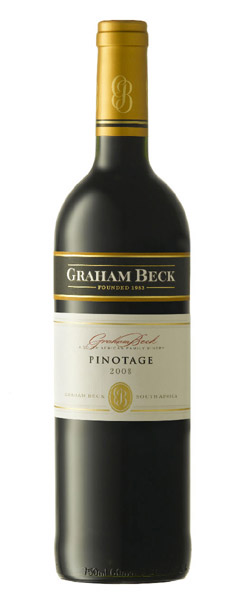 Reds
Reds
Kanonkop Kadette 2005 (Findlater €13). I’ve still got a few bottles of 2004 in my cupboard and am playing them out as meanly as possible because it’s one of the best value aged wines I’ve had in ages. From pinotage, cabernet and merlot, the 2005 is also evolving nicely, with smooth strawberry and black fruit flavours, laced with a subtle leatheriness.
Fleur du Cap Pinotage 2007 (Febvre €14). Again, I found the 2005 developed really well and I was sorry (very recently) to see the back of it. The new vintage has fresh strawberry and damson flavours and only shows that old fashioned touch of rubber if you keep it hanging about, opened, for a week or so. Even then it’s perfectly drinkable!
Graham Beck Pinotage 2008 (Findlater €14). Smooth black cherry and summer fruits would make this perfect for roast duck or turkey.
Fairview Amazing Malbec 2009 (Gilbeys €10.99)
Certainly, this is a bells and whistles label but the wine’s not bad. Tasty black fruit and a warm finish make it perfect for game and grilled meats.
False Bay Shiraz 2007 (Gleeson €9.49). Lively plum and cherry fruit, with touches of allspice, make it ideal for grills and lamb.
Winery of Good Hope Shiraz 2007 (Cassidy €10.99). Clean, plummy fruit with decent length and character for the price.
There’s also a good chardonnay in this range.
Hout Bay Shiraz 2009 (Febvre €12). Soft spices and brambly fruits make this a good wine for spicy duck dishes.
Sweet: Klein Constantia Vin de Constance 2005 (€49). One hundred years ago, vin de Constance was considered one of the greatest wines in the world. Made from shrivelled muscat a petit grains, the wine is aged for four years before bottling and can easily live another 20. With almost 160 gms of sugar per litre, the 2005 is sumptuous and honeyed, with flavours of marmalade, apricots and pineapple. Expensive but would be a lovely gift.
Bicycle ride for Gallo
One of the wine world’s biggest ever wine frauds came to a climax this month when a French court sentenced a dozen people for selling fake pinot noir. Claude Courset of French wine brokers Ducasse, executives from negociants Sieur d’Arques, and several Langudoc wine suppliers, were convicted of selling the equivalent of 18m bottles of fake pinot noir from the Languedoc, much of it to the wine giant E & J Gallo.
The story began in 2006, when there was a sharp demand for pinot in the US. Working with Sieur d’Arques, Gallo had developed Red Bicyclette, a French wine brand for the US market, and wanted to add a pinot to the range. Sieur d’Arques arranged to purchase bulk pinot noir from Ducasse, and the Gallo wine went on to the market as a varietal Vin de Pays d’Oc pinot, with a legal addition of around 15% grenache and syrah. It’s perfectly usual, by the way, for varietal wines to contain a proportion of other grapes and, in the US, if that proportion is less than 25%, it doesn’t have to be stated. In the EU the limit is 15%.
It wasn’t until early 2008 that someone noticed that Ducasse was selling more pinot noir than Languedoc actually produced! It’s not entirely clear how much was sold in total, but it appears to have been around 115,000m hectolitres over two vintages, while the whole region produces under 50,000m hectolitres of pinot noir annually. A year’s intensive investigation followed and it’s understood that much of the so-called pinot was actually merlot and syrah and that the total quantity of pinot actually supplied to Ducasse was around 15,000m hectolitres.
Sieur d’Arques, who purchased wine from Ducasse, and shipped it on to Gallo, have denied all knowledge of the fraud. Nevertheless, the French court fined them €180,000, and also imposed suspended sentences and fines on 11 other people accused of being involved in the fraud. Courset himself was fined €45,000.
Gallo was unaware of the fraud and no charges have been preferred against them. They have expressed shock and believe that any fake wine was confined to “2006 vintage and prior”, adding that they will be working with “the appropriate US authorities to determine any next steps required for potentially mislabelled pinot noir in the market place.” They say that they purchased no more than 20% of the fraudulent wine.
A number of UK journalists have expressed amusement that consumers drinking the suspect wine noticed nothing amiss. That’s actually a bit unfair because if high cropping pinot is blended with 15-25% other varieties it inevitably loses much of its character anyway; besides Red Bicyclette is just a $9 bottle for everyday drinking and isn’t really aimed at wine buffs.
A more serious issue is whether the fines for these offences were sufficient to prevent a repeat of this kind of activity. Given that the fines ranged from €3000 to €180,000, with only €45,000 being imposed on Courset, it seems unlikely. It’s been estimated that the fraudsters, including suppliers who mislabelled the wines, netted a total profit of around ?7m euros, with €3.7m going to Ducasse. According to Christophe Escorgel, lawyer to the union of Pays d’Oc winegrowers, there has been “a loss of image and of reputation which can’t be quantified.”
He is right to be worried; French export agency, Ubifrance, has just revealed that the value of French wine exports dropped by around 20% in 2009, falling to around €5.5bn, a figure not seen since around 2000. Against the current economic backdrop, wine producers don’t have the luxury of allowing questions to be posed regarding the quality and authenticity of their wine. They need to ensure that punishment for fraud is severe and sure.
Meanwhile, the burning question is: if Gallo only purchased 20% of Ducasse’s offering, where did the rest of it go? At least one other wine conglomerate is believed to be re-examining their supplies of southern French pinot. It seems that Gallo may not have been the only company taken for a ride.



 Print
Print

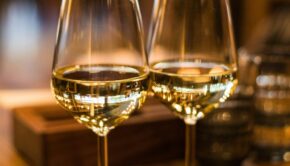
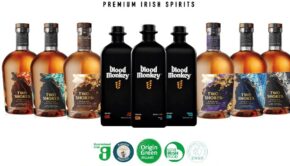

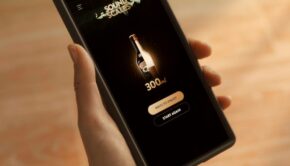

Fans 0
Followers